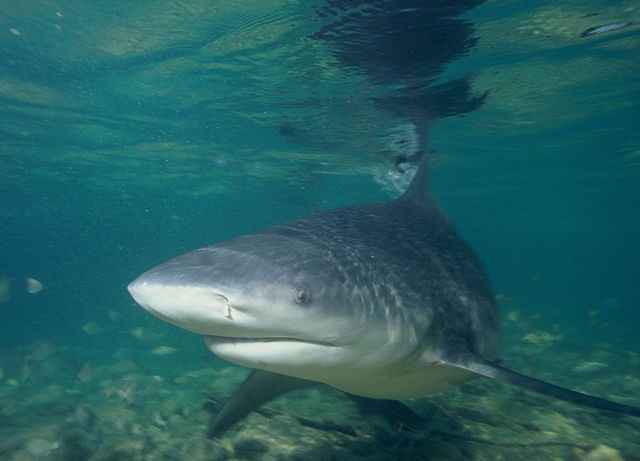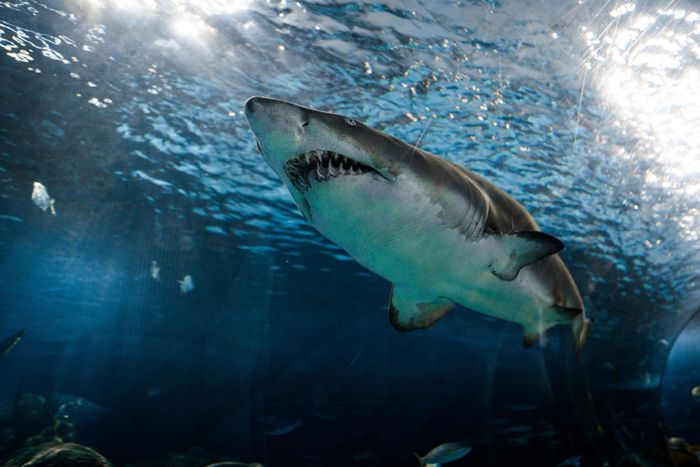Bull Shark Versus The Great White
There is always that question about which is the mightier shark. We're giving you details about the bull shark versus the great white shark.

People often imagine sharks as ferocious man-eaters who prowl close to beaches and devour hapless swimmers. Because of this negative image, it becomes difficult to raise awareness for endangered shark species. And no other species of shark gets the majority of the negative press than the bull and great white sharks. They are feared because they are the sharks most often implicated in shark-related attacks. Because of this, the two sharks became the poster boys for the image of a monster shark. A question often asked about these two is: “Which of these two sharks is more dangerous?”
We will analyze these two sharks and see for ourselves which one of them is indeed more dangerous. We will compare their physical attributes, habitats, and even their numbers.


The Great White Shark
Before we can make our judgments, we need to first look at the facts. We’ll start with the more famous of the two. The great white shark (Carcharodon carcharias) is a fish that needs no introductions. It is the most famous, or rather infamous, shark species and is the iconic shark from the film Jaws. Whenever people think of sharks, it’s either this or the hammerhead shark.
The great white is identified by its white belly, gray skin, bullet-shaped body, and over 300 rows of teeth. Aside from these, the great white’s skeleton is composed primarily of cartilage instead of bone, and they have tough, leathery scaleless skin. Its shape enables it to swim nimbly, and it also possesses a great sense of smell. These traits make the great white an undisputed apex predator in the ocean. Its entire body is designed to detect, attack quickly, and devour fish. A great white can detect a drop of blood up to three miles away or smell it from 25 gallons (100 liters) of water.
The great white can grow up to 15-20 feet in length and weigh more than 5,000 pounds. Not only that, they can live as long as humans, up to 70 years. In one instance, some divers in Oahu, Hawaii, have found a great white estimated to have weighed about 2.5 tons.
All this information makes great whites look extremely dangerous. But what most mainstream media won’t tell you is that these sharks are rather shy when encountered in the wild. The great white won’t attack humans so long as they don’t go too close to them, as they may become curious and will approach them. The only time they’ll become aggressive is when another great white passes too close to them, but these instances are rare because great whites tend to give each other a wide berth.
The great white is found mostly on the shores of California, Hawaii, and most of the Northeastern Coast of the United States. They can also be found in Australia, South Africa, the Philippines, the Caribbean, and Sri Lanka. They are located offshore and coastal waters with water temperatures at around 54-75 degrees Fahrenheit. This means that great whites are often found in deeper waters that are far from the shore. Although there are cases of great whites venturing into shallower waters, these are rare cases because the majority of them prefer the colder, deeper waters.


The Bull Shark
The bull shark (Carcharhinus leucas) is only second to the great white in the number of incidents of attacks on humans. Together with the tiger shark, these three sharks have the highest number of shark attacks, according to the International Shark Attack File. Although not as famous, the bull shark compensates for this by being more aggressive than the great white.
The bull shark could be identified from the great white by its stouter body and long pectoral fins. They are gray-brown skin and white bellies, and their fins have darker tips, particularly young ones. They also have placoid scales, which are overlapping sharp triangular scales that protect them from harm. Younger bull sharks have a brownish-gray color, while older ones have a darker gray color. They also have broad teeth, responsible for the jagged triangle at the top of the shark’s jawline.
Unlike great whites, bull sharks are a lot smaller. They only reach 8-12 feet long, and their pups are 2-3 feet at birth. They also only weigh 200-300 pounds. Male bull sharks are taller and lighter, while females are shorter and have more weight in them. The average lifespan of a bull shark is also only about 12 years, though they can also reach up to 16 years.
While the great white is the top predator of the open ocean, the bull shark is the top predator of the coastal waters. This means that they are more commonly found than the great white, as they live closer to the shores. This could also explain why they have a lot of incidents, as humans encounter them more than any other type of shark. They can be also be found in brackish waters and could even be seen on freshwater lakes and rivers.
The Great White Shark Versus Bull Shark: Which is More Dangerous?
When purely looking at physical traits, the great white wins, hands down. It’s bigger and stronger than the bull shark, so it’s more dangerous, right? But this ignores the fact that people will more likely encounter a bull shark when they go swimming or angling. Also, great whites aren’t the ruthless monster predator that films depict them as. So long as humans respect their boundaries and don’t go in the water when bleeding, they won’t be attacked. Bull sharks, on the other hand, are far more aggressive and are more likely to attack humans when they detect them. And even though they’re known to be aggressive, bull sharks won’t attack humans unless they come close to them without warning or provocation.
In other words, sharks, great white or bull, are surprisingly not as dangerous as people are led to believe. According to researchers, a lot of the reported great white attacks may even be a case of mistaken identity. This means that the statistics presented about the number of shark attacks aren’t as reliable as one would think and must be analyzed carefully. So sharks aren’t as dangerous as the media portrays them as, but they’re also not that safe to approach carelessly as well. So when you see one in the wild, avoid making it uncomfortable and give it the proper respect you give to any other wild animal.



